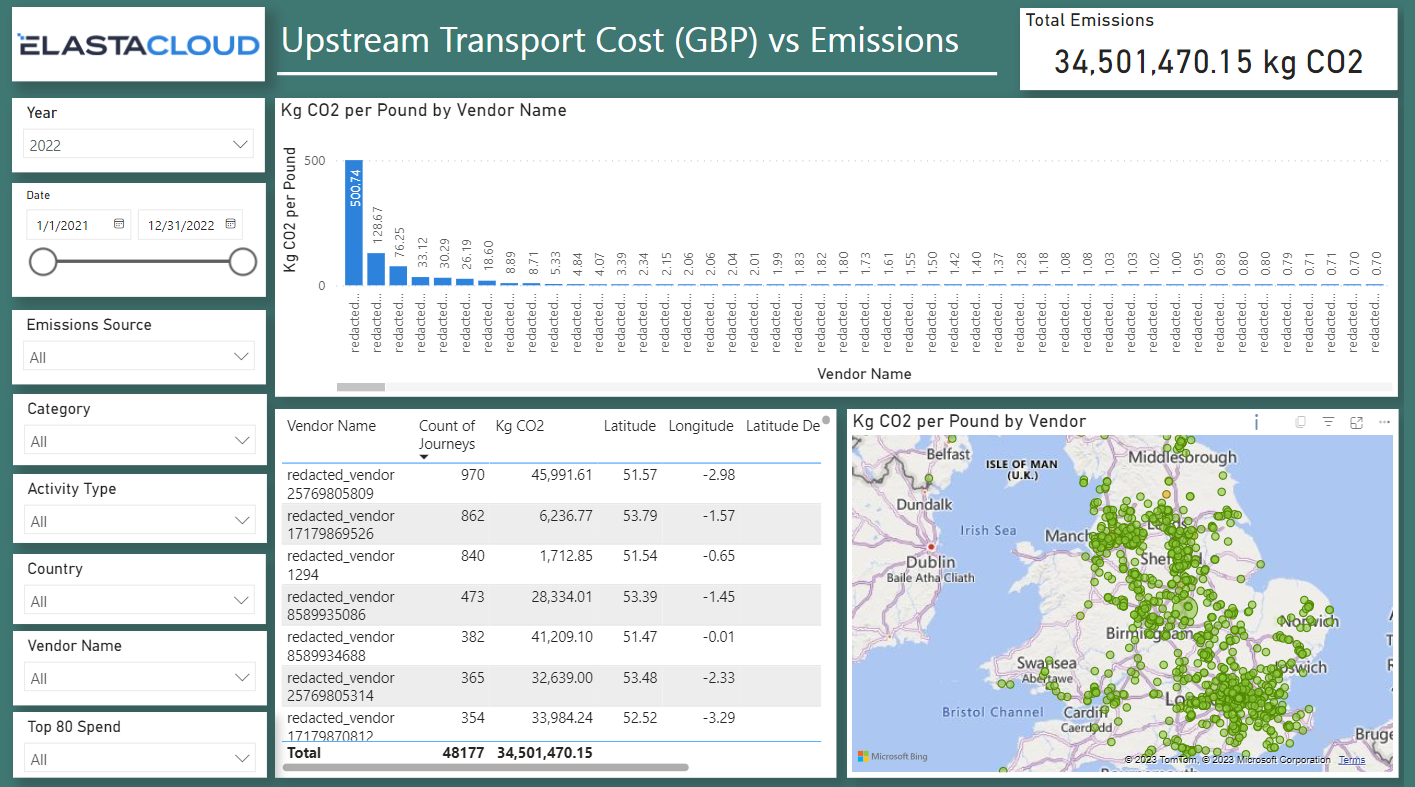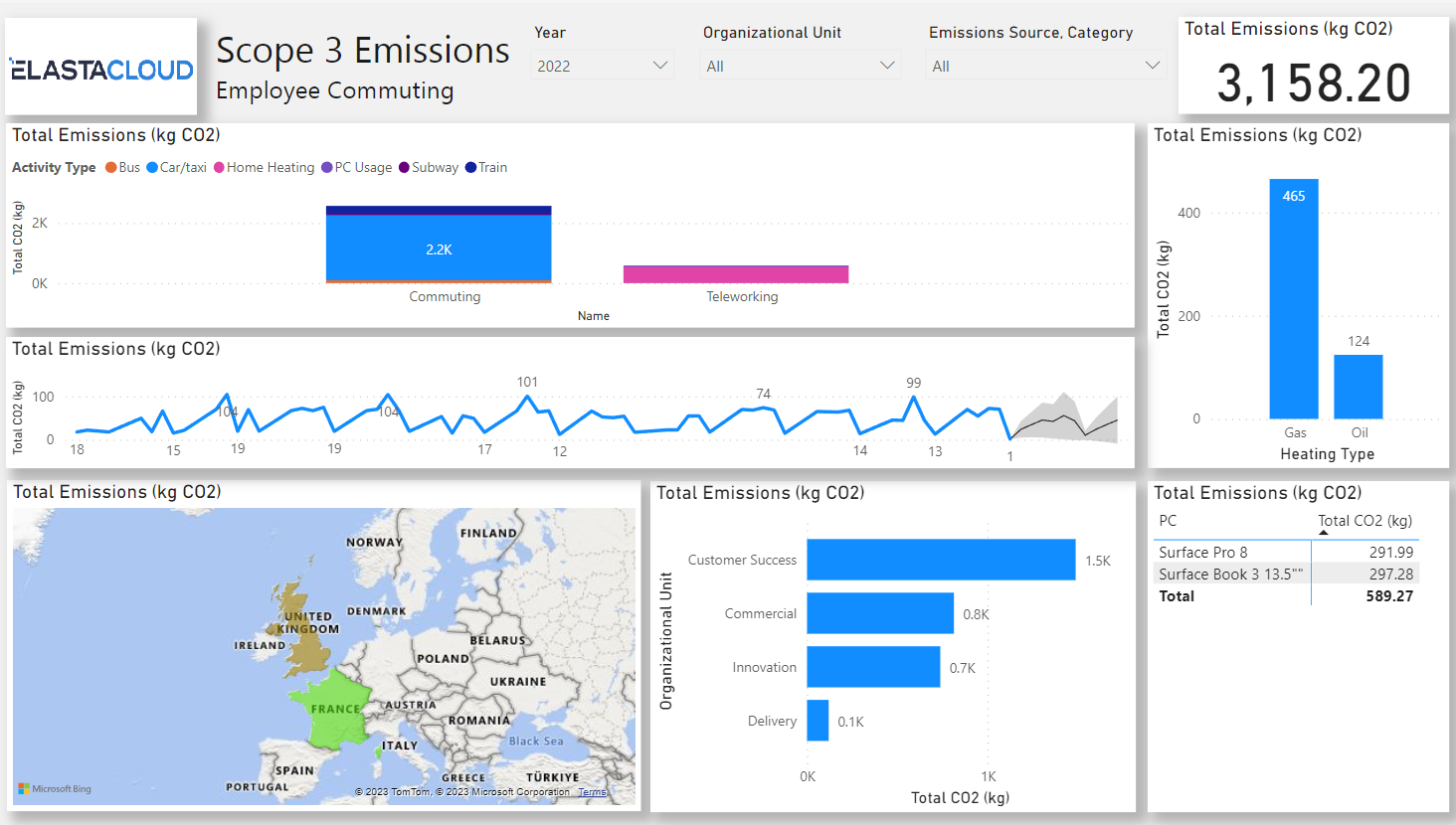Scope 3 category 1: Purchased Goods and Services
Deployment of the Scope 3 category 1 accelerator can take data from business ERP systems, leverage our carbon conversion databases to calculate emissions for purchased goods and services and upstream transportation. Additional data sources within this accelerator enable views of biodiversity risk across the supply chain. Our supply chain risk model understands forecasted demand of purchased goods and services, in line with climate risk scenarios (flood, drought, cyclones, emissions, etc) and geopolitical risk from 1000’s of news sources to predict supplier delay, providing cost saving benefits to business services and projects.
Scope 3 category 4: Upstream Transportation
This accelerator connects to procurement systems and supplier detail datasets, which are enriched with route identification and our carbon conversion datasets, to calculate emissions for all supply chain transportation. Our emission outputs allows businesses to understand the impact of upstream transportation and distribution company-wide by providing a comprehensive view of the emission hotspots throughout the supply chain, revealing valuable insight into areas of improvement for carbon and cost reduction during procurement of goods.


Scope 3 category 5: Waste Generated in Operations
This accelerator empowers businesses to gain comprehensive insights into their Scope 3 Category 5 emissions at a project, waste stream, and procurement level. By augmenting consumption data with disposal statistics, it facilitates a deeper understanding of emission patterns and areas for improvement to achieve their net zero goal, providing businesses with the means to seize supply chain opportunities for effectively cutting waste and reducing emissions.
Scope 3 category 7: Employee Commuting
This accelerator hooks into business HR systems to kick off several data enrichments and calculations, providing granular predictive analytics on emissions related to employee commuting and teleworking. By understanding employment type, role, location of work and hardware used by employees, this data can be enriched by weather data, energy mixes at specific locations to calculate emissions effectively today and into the future. Allowing businesses to focus on operational changes to accelerate emission reduction plans.

